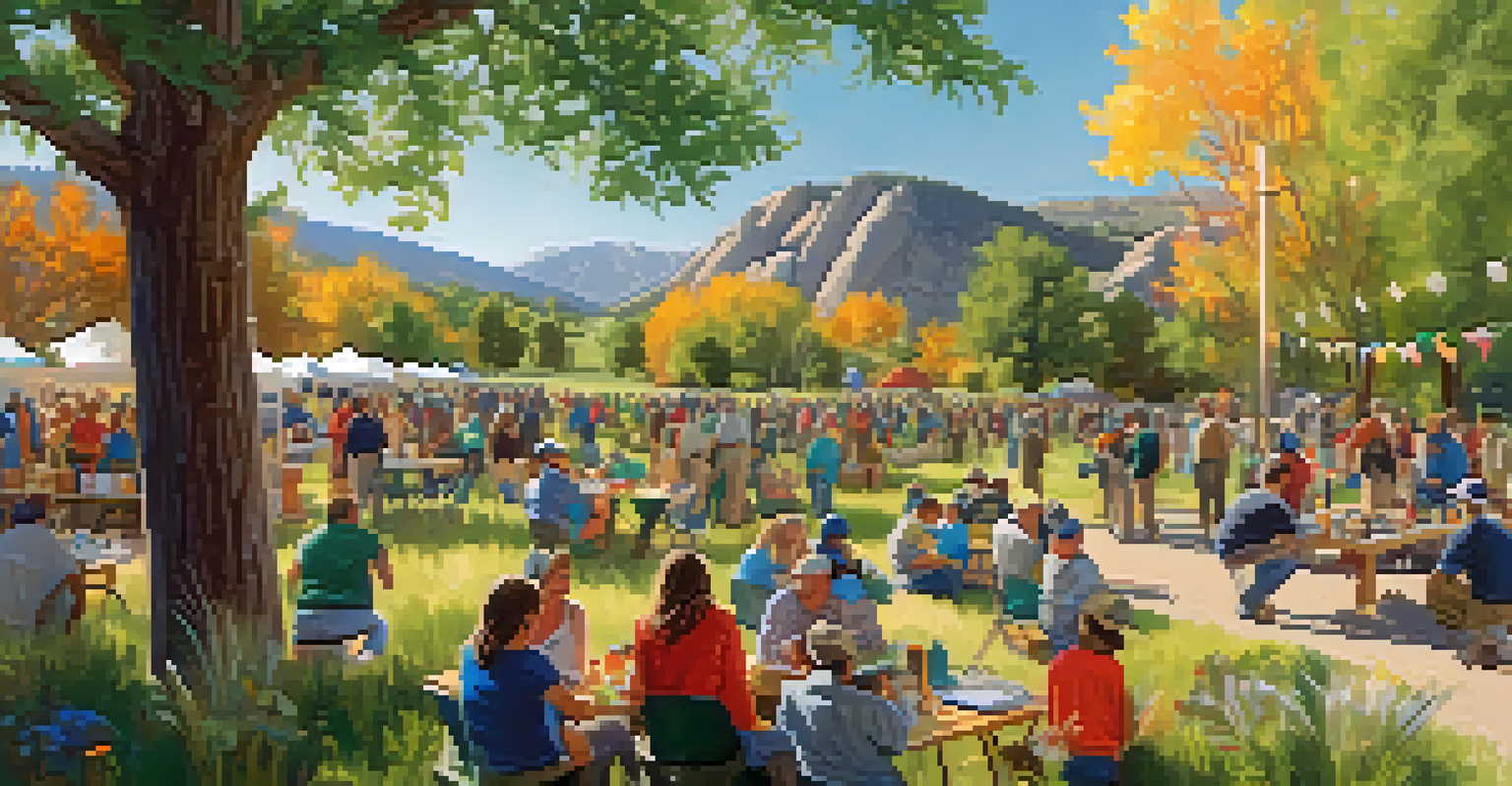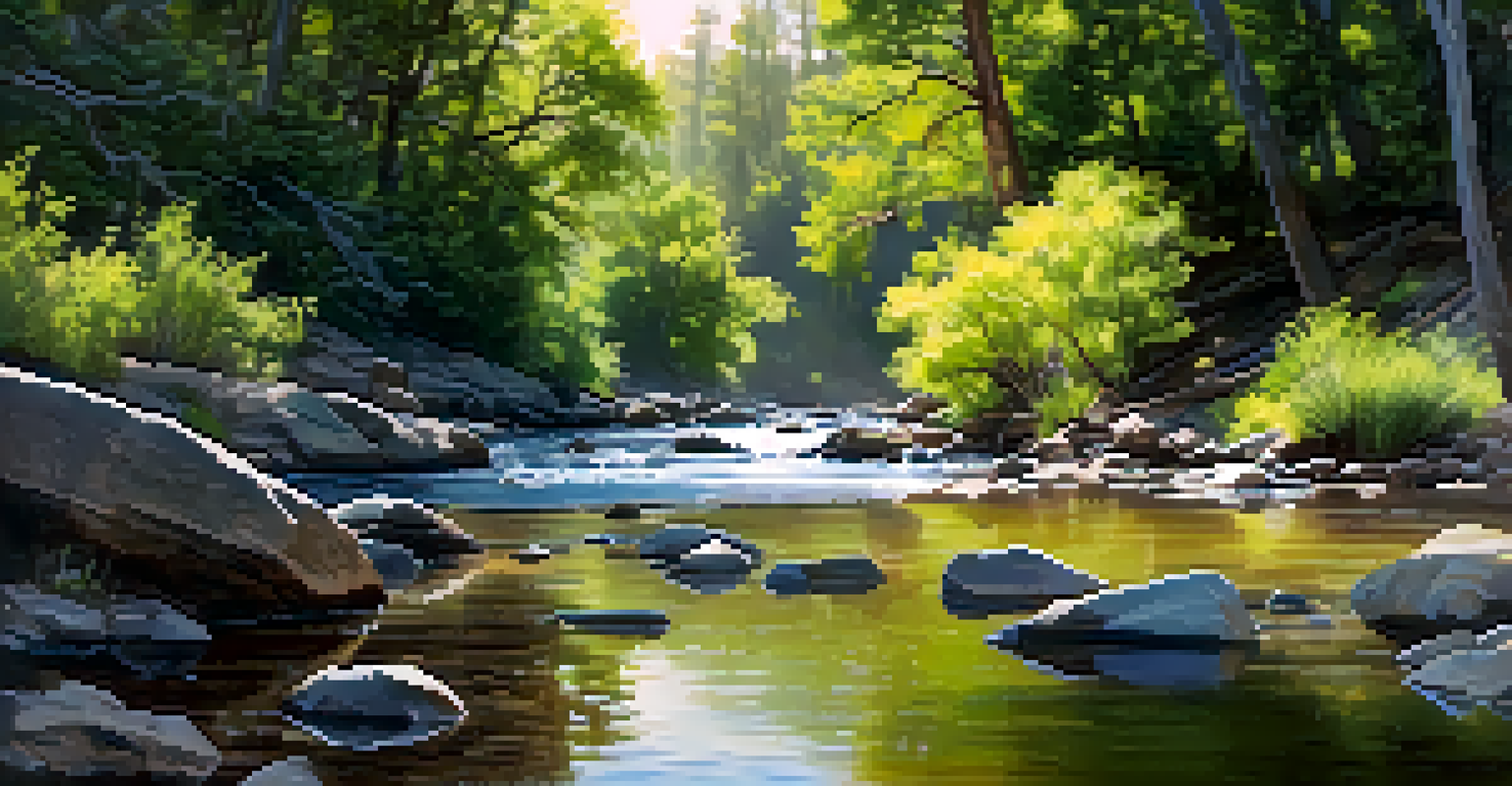Boulder’s Commitment to Wildlife Conservation and Tourism

Understanding Boulder’s Unique Ecosystem and Wildlife
Boulder, Colorado, is a treasure trove of natural beauty, home to diverse ecosystems that support a variety of wildlife. From the iconic Flatirons to the expansive foothills, this city offers a unique blend of mountains, forests, and plains. The area's rich biodiversity includes species like deer, elk, and an array of birds, each playing a crucial role in the ecological balance. Understanding this intricate web of life is vital for both residents and visitors alike.
The environment is where we all meet; where we all have a mutual interest; it is the one thing all of us share.
This unique ecosystem is not just a backdrop for outdoor activities; it is a living entity that requires protection and respect. Boulder's commitment to preserving its natural environment is evident in its numerous conservation efforts. These initiatives aim to maintain the health of local wildlife populations while also ensuring that the natural landscape remains untouched for future generations.
By fostering awareness about the importance of wildlife conservation, Boulder encourages tourists to appreciate and protect its stunning nature. The city’s visitors are often drawn to its beautiful scenery, but they also have the opportunity to learn about the delicate balance that sustains this environment. Thus, every hike, bike ride, or nature walk can become an educational experience.
The Role of Local Organizations in Conservation Efforts
In Boulder, various local organizations play a pivotal role in wildlife conservation and education. Groups like the Boulder Audubon Society and the Boulder Open Space and Mountain Parks department are at the forefront of these efforts. They work tirelessly to protect habitats, monitor wildlife populations, and educate the public about local flora and fauna.

These organizations often organize community events, such as guided nature walks and volunteer days, which not only foster community spirit but also deepen people's connection to nature. These events serve as a reminder that conservation is a collective responsibility, where every individual can contribute, whether by picking up litter or participating in a habitat restoration project.
Boulder's Wildlife Needs Protection
Boulder’s diverse ecosystems and wildlife require ongoing conservation efforts to maintain their ecological balance.
Moreover, local organizations collaborate with businesses to promote eco-friendly tourism practices. This partnership helps ensure that tourism contributes positively to conservation efforts, such as through donations from outdoor activities or educational workshops that focus on sustainable practices.
Boulder’s Eco-Tourism Initiatives and Their Impact
Boulder has embraced eco-tourism as a way to celebrate its natural beauty while promoting conservation. This approach not only attracts visitors but also educates them about the importance of preserving the environment. Eco-tourism initiatives often highlight sustainable practices, like using local guides and promoting low-impact activities, which help minimize human impact on wildlife.
In every walk with nature, one receives far more than he seeks.
One of the most popular eco-tourism activities in Boulder is hiking. The city boasts numerous trails that offer breathtaking views and opportunities to observe wildlife in their natural habitat. These trails are designed with conservation in mind, ensuring that visitors can enjoy the scenery without disturbing the delicate ecosystems.
Additionally, eco-tourism helps generate funds for conservation projects. By choosing to participate in eco-friendly activities, visitors contribute to local economies while supporting initiatives that protect wildlife and their habitats. This symbiotic relationship between tourism and conservation illustrates how responsible travel can have a lasting positive impact.
The Importance of Community Engagement in Wildlife Protection
Community engagement is essential for successful wildlife conservation in Boulder. Local residents are often the first line of defense in protecting the environment, and their involvement can make a significant difference. Whether it's reporting wildlife sightings, participating in clean-up events, or advocating for local policies, community members play a vital role in conservation efforts.
Educational programs aimed at residents and visitors alike help foster a culture of conservation. By providing information on local wildlife and the challenges they face, Boulder empowers individuals to take action. Awareness campaigns can transform passive interest into active participation, encouraging everyone to contribute to wildlife protection.
Community Engagement Drives Success
Active participation from local residents is crucial for effective wildlife conservation and fostering a culture of stewardship.
Moreover, engaging the community creates a sense of ownership over the local environment. When people feel connected to their surroundings, they are more likely to advocate for policies and practices that protect wildlife. This grassroots involvement is crucial for sustaining long-term conservation efforts.
Wildlife-Friendly Practices for Tourists to Follow
As visitors flock to Boulder, it's important for them to adopt wildlife-friendly practices. Simple actions, such as staying on designated trails and keeping a safe distance from animals, can significantly reduce human impact on local wildlife. Tourists are encouraged to respect the natural habitats they explore to ensure that these areas remain healthy and vibrant.
Another key practice is to avoid feeding wildlife. While it may be tempting to attract animals for a closer look, feeding them can disrupt their natural behaviors and lead to dangerous situations. By refraining from feeding wildlife, tourists help maintain the delicate balance of the ecosystem.
Lastly, choosing eco-friendly accommodations and supporting local businesses that prioritize sustainability can amplify the positive impact of tourism. When visitors consciously select options that align with conservation values, they contribute to a culture of responsibility that benefits both the community and the wildlife.
Success Stories in Boulder’s Wildlife Conservation
Boulder has seen numerous success stories in wildlife conservation, showcasing the effectiveness of community efforts and collaboration. One notable example is the recovery of the local prairie dog population, which faced significant threats due to habitat loss. Through targeted conservation programs and public education, residents have helped restore these vital animals to their rightful place in the ecosystem.
Another success story is the protection of the iconic Boulder Creek, which has become a haven for various species, including fish and birds. Restoration projects aimed at improving water quality and habitat have resulted in a thriving ecosystem that supports both wildlife and recreational opportunities for residents and visitors.
Eco-Tourism Supports Conservation
Boulder's eco-tourism initiatives not only attract visitors but also educate them about sustainable practices that benefit wildlife.
These successes not only highlight the importance of conservation but also serve as inspiration for future efforts. By sharing these stories, Boulder encourages a collective commitment to protecting wildlife, demonstrating that when communities come together, positive change is possible.
Challenges and Future Directions for Wildlife Conservation
Despite its successes, Boulder faces ongoing challenges in wildlife conservation. Urban development, climate change, and increased tourism put pressure on local ecosystems. As the city continues to grow, balancing development with conservation becomes increasingly complex, requiring innovative solutions and community involvement.
Future conservation efforts will need to focus on adaptive strategies that address these challenges while promoting sustainable practices. This might include creating wildlife corridors to facilitate safe animal movement or enhancing public transportation options to reduce traffic in critical habitats.

Moreover, ongoing education and advocacy are essential to ensure that both residents and visitors remain engaged in conservation efforts. By fostering a culture of awareness and responsibility, Boulder can continue to protect its rich wildlife heritage for generations to come.